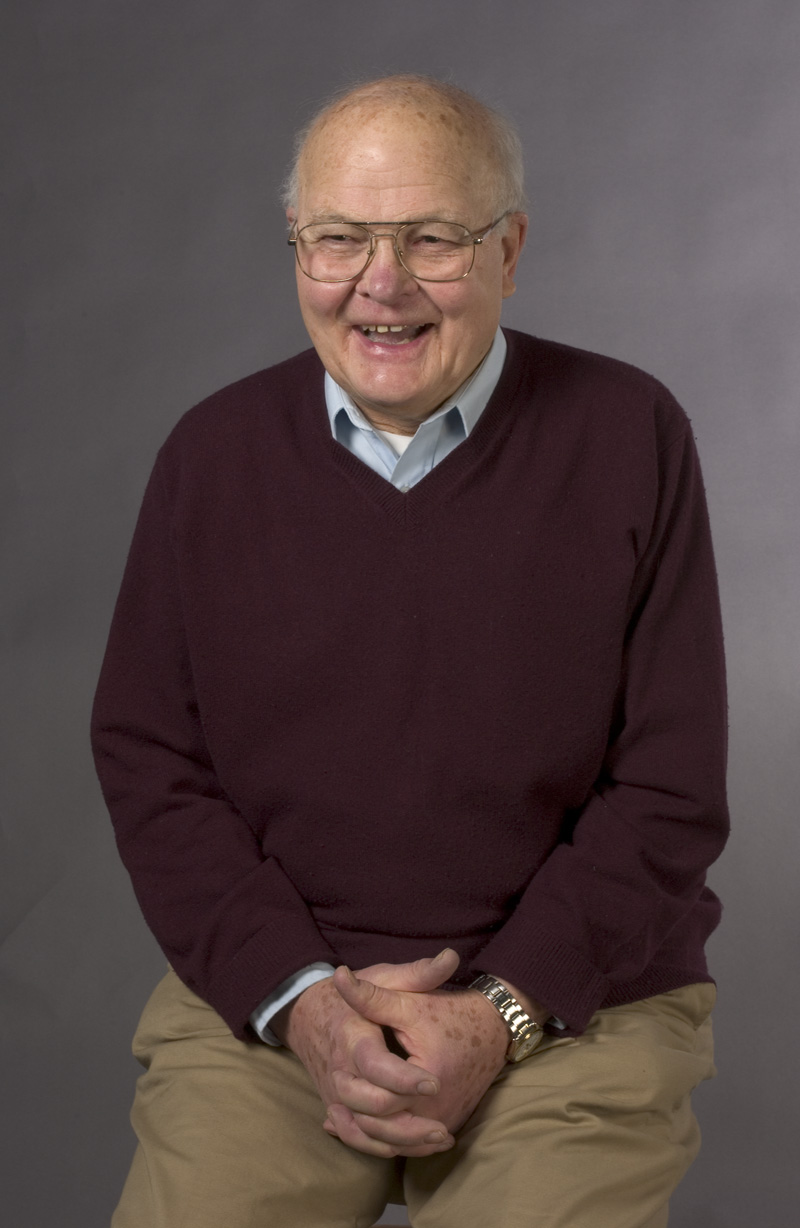In Memoriam: Donald Young

Donald Young
On March 30, Fermilab’s first employee died at the age of 90. Donald Young was internationally known for his work on linear accelerators and instrumental in the establishment of Fermilab’s LINAC.
“Don was a very solid person,” John Peoples, Fermilab’s third director, said. “He filled the roles that needed to be filled. If you needed a leader, he would lead, but if you needed someone to be your deputy, he could be your deputy. He kept projects going and was really easy to get along with.”
After serving as a communications officer in the Infantry during WWII, Young received his PhD from the University of Minnesota and became a key player in the Midwestern Universities Research Association (MURA). When Fermilab was established in 1968, Young was the first person Robert Wilson hired.
“Don was the man I wanted to head the Linac Section of the National Accelerator Laboratory,” said Wilson in a 1969 interview with The Village Crier. “He was my first choice and luckily, for [Fermilab], he accepted the invitation and the challenge.”
In September 1968, Young, Wilson and Francis Cole sat at a picnic table and developed the plans for the first of many particle accelerators that would transform a plot of farmland in Batavia into a high-energy physics laboratory.
The Village Crier from September 1969 describes the nine months leading up to the establishment of Fermilab’s first accelerator, which would provide a 10-MeV beam:
“It was a watchful and waiting time – a time when patience and understanding often times took the place of progress; but, it was an exciting time. Above all, it was a time when Donald Young was always willing to work as hard and as long as his team was working; a time when motivation was the key word and Donald Young, the motivator.”
Cyril Curtis, a retired Fermilab physicist and longtime friend of Young who also helped establish Fermilab’s first accelerator, remembers the passion and perseverance Young showed.
“He was an inspirational leader and encouraged people to do their best and succeed when there were problems,” Curtis said. “I remember one Saturday I was at my house in Batavia mowing my law, and Don pulled up in his car and wanted to talk about a sparking problem we were having in the pre-accelerator. He always made sure things got done and always gave credit to his team members for their successful efforts.”
After the success of the 10-MeV beam, Young devoted himself to establishing the LINAC.
“Don had breadth of knowledge on how an accelerator was supposed to be assembled,” Bruce Chrisman, Fermilab’s chief operating officer, said. “He had direct accelerator experience and brought his knowledge from MURA to Fermilab. Even though he was incredibly experienced, he was always willing to take time to explain technical details and why something was important.”
Don acted as the LINAC section leader during its development and construction and continued to be heavily involved with the LINAC during his time at Fermilab. He also played a large role in the development of the FNAL Cancer Therapy Facility and the Low-Energy Electron Cooling test experiment.
“Don was involved in all aspects of Fermilab,” said Chuck Schmidt, a retired Fermilab scientist. “He was an excellent physicist, knew the information and knew how to get projects done.”
Young’s inspirational attitude motivated the scientists and engineers he worked with. According to Schmidt, Young’s leadership, charisma and enthusiasm helped Fermilab develop the quality accelerators it has today.
“If your proposal was any good, Don would get it done,” Peoples said. “He was my ideal deputy and we worked extremely well together.”
Young formally retired in 1990 but often returned to Fermilab to visit colleagues or help with laboratory issues. While he was passionate about his work at Fermilab, Young also loved to spend time with his family and friends.
“Don was very sociable,” Curtis said. “He often invited people over to his house for evening meals and would go up to Wisconsin to go fishing. He owned a cabin on Bear Lake in Wisconsin where his extended family regularly gathered. Don and his wife Billy’s children—Linda, Pattie, and Phil—grew up, had families of their own, and regularly returned to that cabin for family reunions. Don was a great family man.”


